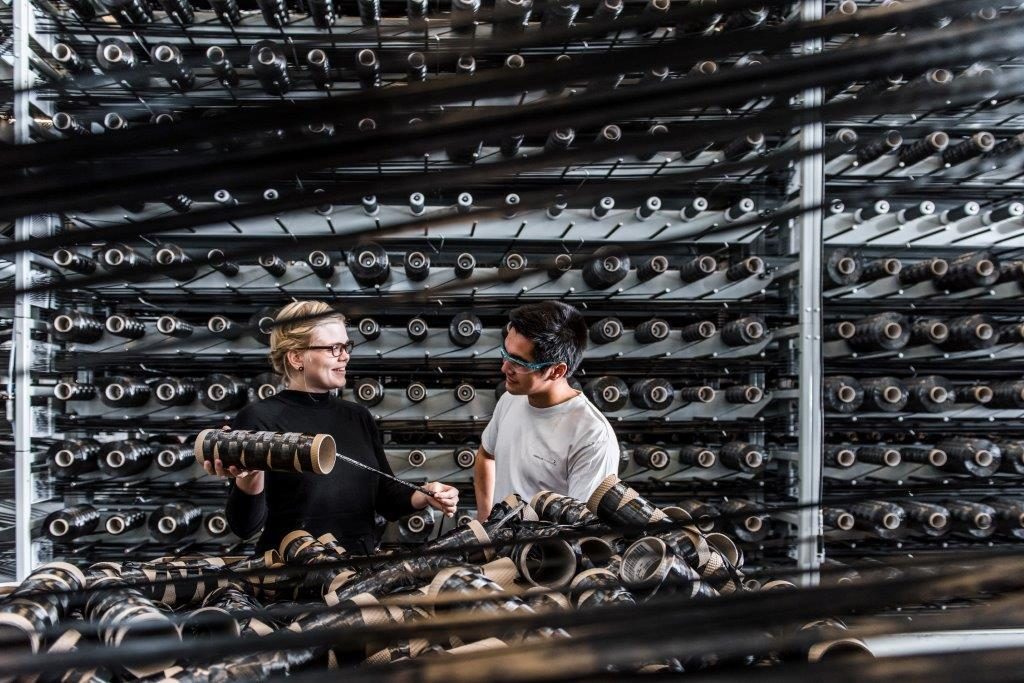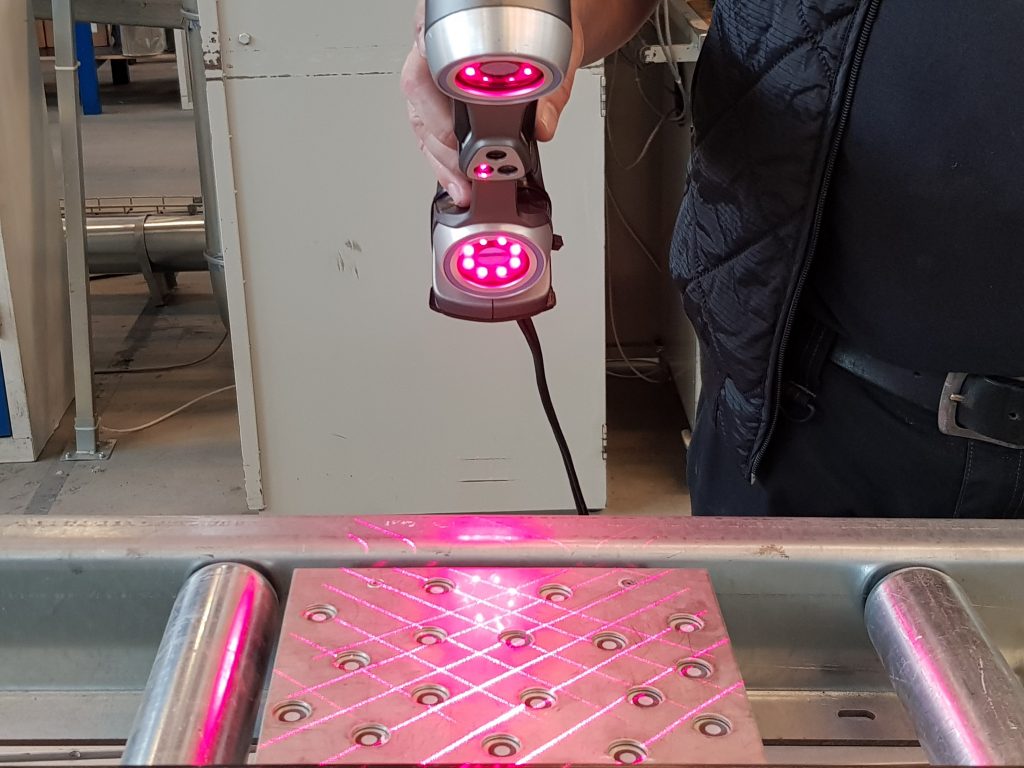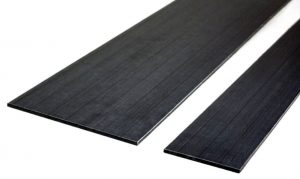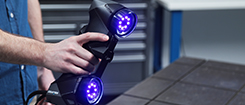July 24, 2024
Improving Vessel Integrity at a Refinery thanks to Advanced 3D Scanning Technology See the article
World-leading producer of glass- and carbon-fiber profiles trusts in Creaform 3D scanner to measure the curvature of profiles directly on the production floor.
Fiberline A/S, a Danish family owned company founded by Henrik and Dorthe Thorning in 1979, is today a world-leading producer of glass- and carbon-fiber profiles. Its head office and technology center are both situated in Middelfart, Denmark. The company also has a factory in China. Today, the company employs more than 300 people who share a common fascination for innovative materials and manufacturing processes. With Fiberline A/S’s pultrusion technique, dry fibers are drawn continuously through a closed die in which a matrix is inserted. The resulting product has very special properties that can be tailored to the needs of individual customers.
Fiberline A/S’s products are primarily used in three sectors: wind turbines, windows and facades and structural profiles. In the wind turbine industry, the carbon- and glass-fiber profiles help strengthen some of the world’s longest turbine blades. The excellent insulating properties of glass fibers improve the energy balance in buildings respectively of windows and facades. As for structural profiles, such as bridges, the strength, low weight and durability of the Fiberline A/S products create intelligent solutions.
Measurement of composite profiles’ curvatures
In the past, Fiberline A/S used a manual measuring station to inspect the curvature of its composite profiles. This worked well; however, because it was stationary, the team had to cut test pieces from the production line, which lowered output. The purpose was to find an easy way to measure the curvature of the profiles while they are in continuous production.

HandySCAN 3D scanning the positioning targets
While looking for an in-line measurement solutions, Fiberline A/S’s attention was drawn to the portable 3D scanner HandySCAN 3D™ from Creaform. In cooperation with Kvejborg APS, Creaforms’ distributor in Denmark, a technical solution was developed. Rather than conducting the inspections manually by cutting material to do the testing, the HandySCAN 3D scanner and the methodology enable in-line measurements to prevent the creation of scrap material.
The carbon composite profiles are made through a process called pultrusion, in which carbon fibers are mixed with a matrix inside a large tool. The profiles are less than 1 cm high but +100 mm wide (there are several widths). A large pulling unit draws the profile out of the tool and onto a roller conveyer. Then, the thin profiles are coiled in large coils of several hundred meters.

The carbon composite profiles are made through a process called pultrusion.
To make sure that the profiles are completely straight, a test must be carried out to determine how their curves must be bended, which have to be measured over a length of 8 m. Therefore, Fiberline A/S installed three measurement stations slightly underneath the roller conveyer where the profiles run over. On these stations, positioning targets are applied. The complete setup with the targets is then scanned and saved as a reference file.
 Example of profiles with curves being measured |
When operators want to perform a measurement of a profile’s curvature, they simply use the HandySCAN 3D, a computer with the acquisition software VXelements, and a barcode scanner to scan the composite profile. The scanned data and barcode of the part is then entered into a software together with the information about the specific production line, the batch number for the specific coil and the operators’ ID. The system automatically generates a timestamp. The operators then scan the profile at each measuring station. Once completed, the scanned data is imported into Polyworks software. The scan is compared against the reference file. The software automatically calculates if the scanned profiles have a slight curvature over the length of 8 m. |
Kristine Lund, Production Technology Engineer at Fiberline A/S explained: “The HandySCAN 3D was the most accurate system in the market and it was easy to use. We have many different operators using the equipment, so it was important that is was easy for them and that the system was not operator dependent. The 3D scanner is used on the shop floor by five different teams of operators (over a week). Production runs 24/7.”
Benefits
There are other systems on the market to perform these kinds of in-line measurements, but the inspection would only have been possible with a more complex setup. Now, obtaining the measurements is easy and the same equipment can be used on several production lines rather than having a stationary setup.
Today, Fiberline A/S no longer has to cut test pieces for measurements, which saves money and increases the production output. Each individual measurement is now documented automatically, which has decreased manual documentation. And, as the measurements are now obtained in-line and the results are shown immediately, it is possible to react to any inconsistencies much quicker.
Fiberline A/S is happy about the optimal technical solution as well as the cooperation and support provided by Creaform’s distributor, Kvejborg. The HandySCAN 3D scanner is very accurate and easy to use. Any adjustments to the programs or system that were requested after the initial implementation were successfully met.








